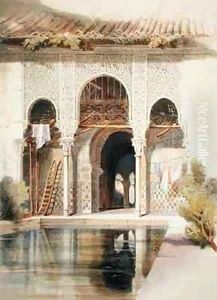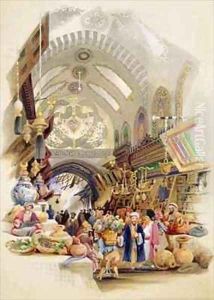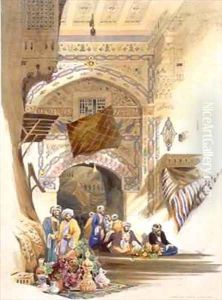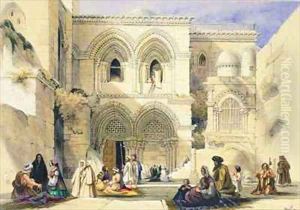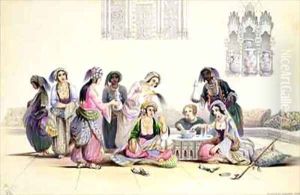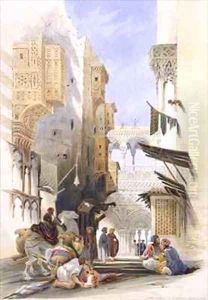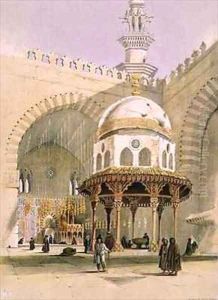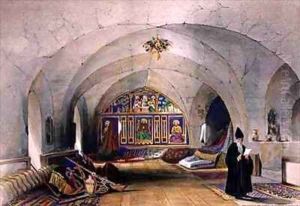A. Margaretta Burr Paintings
A. Margaretta Burr, also known as Anna Margaretta Brereton, was an English artist born in 1808. She was primarily known for her miniature paintings but was also adept at creating larger works and was a skilled watercolorist. Burr was the daughter of a reverend, Rev. James Burr, and was one of at least six children in her family. Despite the limited opportunities for women in the field of art during the 19th century, she managed to develop her skills and gain recognition for her work.
As a female artist in the Victorian era, her training would have likely been private, as women were generally excluded from formal art institutions at the time. Burr exhibited her work at the Royal Academy of Arts from 1835 to 1882, the British Institution, and the Society of British Artists, which was a significant accomplishment for a woman of her time. This indicates that her work was well-regarded and that she was a part of the art establishment to some extent, despite the challenges she would have faced as a woman.
Her subject matter typically included portraits, though she also painted landscapes and religious scenes. Burr's portraits were often of children and women, capturing the delicate features and dress of the era with fine detail. Her works were praised for their elegance, refinement, and the ability to capture the character of her sitters.
A. Margaretta Burr remained unmarried throughout her life, which was somewhat unusual for women of her social standing during the Victorian era. It is possible that this allowed her greater freedom to pursue her artistic career. She lived to be 74 years old, passing away in 1882. Despite her talent and the recognition she received during her lifetime, like many female artists of her time, Burr's work has not been widely remembered or studied in modern times. Nevertheless, her contributions to Victorian art are valuable, and her surviving works offer insight into the aesthetics and social norms of her day.
